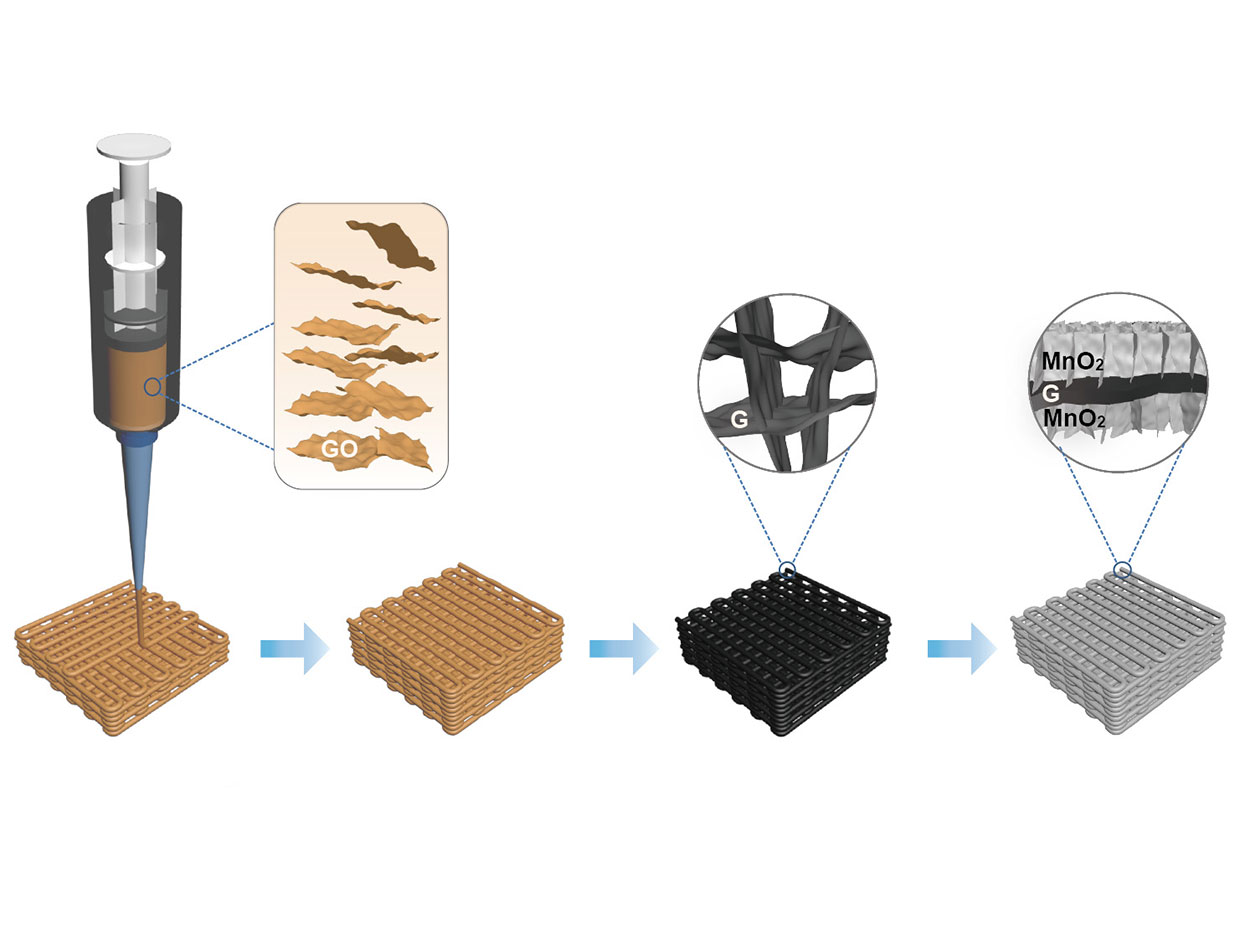Researchers at the University of California, Santa Cruz (UCSC) and Lawrence Livermore Laboratory (LLNL) have developed a 3D printing technique for graphene-based aerogel electrodes used within energy storage devices such as supercapacitors.
Graphene, an allotrope of carbon, is revered for its mechanical strength which (when in an appropriate form) exceeds steel, its electric and thermal conductivity, as well as its lightweight properties. However, such material qualities can only be fully realized in graphene’s original 2D material composition.
Thus, a 3D printed electrode has been created with a higher ability to store an electric charge (capacitance) by leveraging graphene to “validate the new concept of ‘printing’ practically feasible pseudocapacitor electrodes and devices.”
As part of an electrochemical capacitor, pseudocapacitors store energy through a chemical reaction at the electrode surface, providing a more battery-like performance.
“We have successfully addressed low volumetric capacitance in 3D printed graphene aerogel electrodes by ‘filling’ more nanomaterials into this porous graphene scaffold and increasing their densities,” said Professor Yat Li, of UCSC’s Department of Chemistry and Biochemistry.

Additive manufacturing and supercapacitors
“Supercapacitors with high areal energy density are very promising for applications with limited available surface area, for example, the wearable energy-storage devices because of the limited total surface area of human body,” said Professor Li. “Supercapacitors also have the potential to be applied to electric vehicles because of their impressive electrochemical performance even at super high mass loadings.”
According to the researchers’ study, retaining sound electrochemical performance of electrodes at high mass loading is vital for energy storage. Thus, using a 3D printed porous carbon aerogel scaffold and the pseudocapacitive material manganese oxide (MnO2) with a loading of 182.2 mg cm−2, a “record-high areal capacitance” of 44.13 F cm is achievable.

To test their concept, the researchers deposited MnO2 onto 3D printed graphene aerogel lattice on electric current collectors – a device used in electrically powered rolling stock and in transportation (trams and railway tracks). Professor Li added:
“Our 3D printed graphene aerogel/MnO2 electrodes have achieved high volumetric capacitances, hundreds higher than the pure graphene aerogel electrodes.”
The researchers are continuing their research by fabricating asymmetric supercapacitors.
The research paper “Efficient 3D Printed Pseudocapacitive Electrodes with Ultrahigh MnO2 Loading” is co-authored by Bin Yao, Swetha Chandrasekaran, Jing Zhang, Wang Xiao, Fang Qian, Cheng Zhu, Eric B. Duoss, Christopher M. Spadaccini, Marcus A. Worsley, and Yat Li.
Stay updated with the latest in additive manufacturing by subscribing to the 3D Printing Industry newsletter. Also, follow us on Twitter, and like us on Facebook.
Looking for a change of pace or seeking new talent? Search and post 3D Printing Jobs for opportunities and new talent across engineering, marketing, sales and more.
Featured image shows the electrodeposition of MNO2 on the 3D printed graphene structure. Image via UCSC/AAAS.


